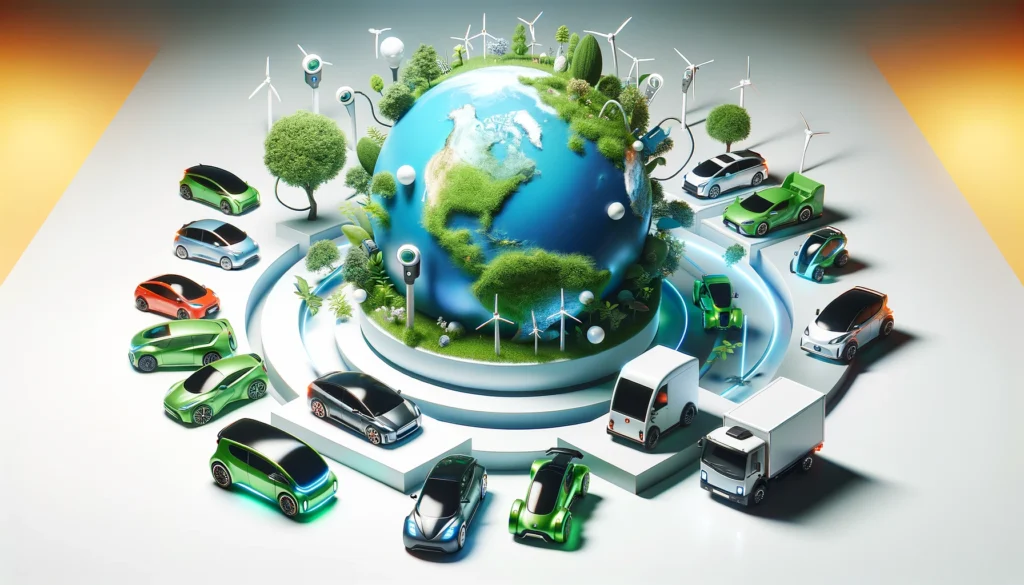Climate experts urge individuals and policymakers to consider switching to electric vehicles (EVs) within the next decade. The transportation sector is responsible for over a quarter of greenhouse gas emissions in the United States, with carbon dioxide from tailpipe emissions playing a significant role in global warming. To combat climate change, a recent study conducted by researchers at the National Renewable Energy Laboratory in Golden, Colorado, suggests that 80% of vehicles sold within the next ten years need to be zero emission in order to meet the 2050 targets for curbing global warming.
The Urgent Need for Zero-Emission Vehicles
According to the study, a staggering 80% of vehicles sold in the next ten years must be zero-emission vehicles to meet the 2050 targets for curbing global warming. The researchers emphasize the urgency of this information, aiming to enlighten policymakers and decision-makers about the critical need to take action. Failing to achieve the 80% zero-emission vehicle goal within the specified timeframe would result in more extreme heat and severe weather events. However, reducing emissions over the next few decades can still lead to a planet worth saving and inhabiting.
Beyond Electric Vehicles: Additional Solutions
While transitioning to EVs is crucial, it is not a standalone solution to transportation pollution and climate change. Researchers argue that electrification alone will not suffice. Other measures, such as reducing travel and driving, transitioning to electric bikes or scooters, utilizing public transit, and expanding the electricity grid to accommodate EVs, are also essential. Furthermore, the study suggests incorporating hydrogen-powered vehicles can reduce greenhouse gas levels. Both EVs and hydrogen fuel cell vehicles emit no carbon dioxide, a potent greenhouse gas.
The Growing Transition to Electric Vehicles
According to the International Energy Agency, the transition to electric vehicles is already underway globally, with electric cars accounting for 14% of new sales in 2022. In Canada, all-electric vehicles represented 7% of new car sales at the beginning of 2023. The Accelerating to Zero Coalition, formed during the UN Climate Change Conference in 2022, pledged to make all new cars and vans zero-emission by 2035 in leading markets and globally by 2040. Canada is also considering regulations requiring automakers to ensure that 60% of new passenger vehicles available for sale in 2030 are zero-emission, rising to 100% by 2035.
The Challenge of Scaling Up Electric Vehicle Adoption
To achieve the necessary number of EVs on the road to combat climate change, substantial challenges lie ahead. In the United States, for example, 90% of all passenger vehicles on the road would need to be electric by 2050, totaling 350 million vehicles. Currently, the U.S. has only around one million EVs. This rapid transition would require a 1,700 terawatt-hour increase in annual electricity generation, equivalent to approximately 40% of the country’s total production in 2021.
Canada would likely face similar challenges in scaling up its electricity production to support widespread EV adoption. The electricity-powering EVs and their manufacturing process must be sourced from renewable and green energy to maximize their environmental benefits. An EV powered by non-renewable energy could potentially generate more greenhouse gas emissions than an efficient gasoline-powered car.
The Implications for Lithium Production
As the demand for EVs continues to soar, lithium production, a key component in battery manufacturing, must increase by 500% worldwide by 2050, according to the World Bank. This surge in lithium production highlights the necessity of securing sustainable and ethical practices to meet this demand while minimizing environmental and social impacts.
In conclusion, the number of EVs needed to achieve climate change goals may surprise many. The urgency to transition to zero-emission vehicles within the next decade is crucial for curbing greenhouse gas emissions from the transportation sector. However, it is important to remember that EVs alone cannot solve the problem of transportation pollution and climate change. Additional measures such as reducing travel, expanding public transit, and utilizing renewable energy sources are equally vital. The challenges of scaling up EV adoption, including increasing electricity production and supporting sustainable lithium production, must be addressed to ensure a successful transition to a greener transportation future.


